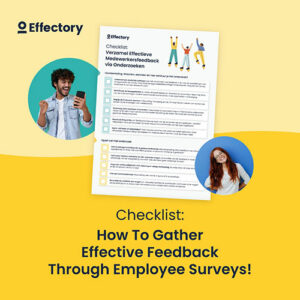What is employee effectiveness?

Despite the popularity of the concept, there continues to be much confusion in HR literature about how to define and measure effectiveness. Over the years different models and approaches have been developed. The most important are outlined below.
Goal Attainment Approach1
An organisation is effective if it achieves its goals.2 This approach can only be used in organisations with clearly defined, time-sensitive, measurable and operational goals. In the literature relating to organisational effectiveness, it has been proposed that only a few organisations meet these criteria. Even so, it is difficult to determine an organisation’s effectiveness without relating it to the organisation’s goals, even if these are not clearly defined. Broadly speaking, the goal attainment approach reflects the views about effectiveness of senior management and shareholders.
ef-fec-tive (adj.)
1 productive or capable of producing a result <=> ineffective
System Resource Approach3
An organisation is effective if it obtains the necessary resources.4 Input variables are more important in this approach than output variables. Organisations are seen as entities that operate to survive and are competing continuously for scarce and valuable resources such as money and personnel. Survival is the most important criteria for organisational effectiveness.5 This approach is relevant for stakeholders on the side of input, such as suppliers and financial backers.
How to gather feedback from your employees
The definitive checklist for creating your employee engagement survey.
DownloadInternal Processes Approach6
An organisation is effective if it functions internally without problems.7 The focus here is on the internal processes that increase organisations’ ability to react to change around them.8 Broadly speaking, this process-oriented approach reflects the views of employees about organisational effectiveness. Criteria for effectiveness include: strong culture, positive working environment and good communication.
Multiple-Constituencies Approach9
An organisation is effective if it can meet the needs of its different stakeholders.10 That is, when the organisation performs well in the eyes of these stakeholders. This approach takes into account the fact that an organisation serves several goals. After all, the various groups of stakeholders have different needs and therefore apply different criteria to evaluate organisational effectiveness.11 As the previous approach already stated, when evaluating organisational effectiveness the following question should be asked: ‘From which perspective is the effectiveness of the organisation being evaluated?’ Evaluations of effectiveness are based on the values and preferences individuals have with regard to the organisation and can thus vary depending on the different groups of employees in the organisation.12 As a result, evaluations of effectiveness are in effect always dealing with perceived effectiveness.
The importance of effectiveness
Effectiveness means ‘doing the right things or occupying oneself with the right things. The concept ‘effectiveness’ is linked to the assumption that organisations are goal-oriented. The focus is on the actual attainment of organisational goals and not so much on the means necessary to reach them or the speed at which they are reached. For this reason, not everything that is effective has to be efficient; but everything that is efficient has to be effective.
Effectiveness is essential for improving results; and in order to perform effectively, clarity is needed. If your employees do not know what results are expected of them, there is a risk that they will work but will not perform. They are not doing the right things and so contribute insufficiently to the success of your organisation.
Working effectively and efficiently are clear signs of a good performance, although variables are interdependent. But not only do the variables influence each other, they also influence and are influenced by other factors. Role clarity, for instance, is key for employees to be able to work effectively and efficiently. Role clarity is instrumental to a good, productive working atmosphere. As long as employees know what their tasks are, the best way is to perform their duties, and what the priority for each task is, they will feel less pressure while working and will be more productive. Having a clear picture of their role paves the way for effective and efficient working. Moreover, it will stimulate employees to invent even more effective and efficient ways to achieve their, and the organisation’s, goals. This has a direct influence on performance.
Leadership also plays a big part in role clarity and productivity. A supervisor or manager portraying great leadership will motivate employees and provide clarity and feedback wherever necessary; thus enabling his employees to go the extra mile, to work more effectively and efficiently and to produce more with less effort.
- Georgopoulos, B.S. and A.S. Tannenbaum (1957) A Study of Organizational Effectiveness. American Sociological Review, Vol. 22, 534-540
- Cameron, K.S. (1984) The Effectiveness of Ineffectiveness. In B.M. Staw and L.L. Cummings (Eds.), Research in Organizational Behavior, Vol. 6, 235-285
- Cameron, K.S. (1986) Effectiveness as a Paradox: Consensus and Conflict in Conceptions of Organizational Effectiveness. Management Science, Vol. 32, 539-553
- Glunk, U. and C.P.M. Wilderom (1996) Organizational Effectiveness = Corporate Performance? Why and How Two Research Traditions Need to be Merged, Universiteit van Tilburg publicaties, 1-29
- Yuchtman, E. & S.E. Seashore (1967) A System Resource Approach to Organizational Effectiveness. American Sociological Review, Vol. 32, 891-903
- Cameron, K.S. (1984) The Effectiveness of Ineffectiveness. In B.M. Staw and L.L. Cummings (Eds.), Research in Organizational Behavior, Vol. 6, 235-285
- Glunk, U. and C.P.M. Wilderom (1996) Organizational Effectiveness = Corporate Performance? Why and How Two Research Traditions Need to be Merged, Universiteit van Tilburg publicaties, 1-29
- Bennis, W.G. (1966) The Concept of Organizational Health. In: W.G. Bennis (Ed.). Changing Organizations. New York: McGraw-Hill
- Cameron, K.S. (1984) The Effectiveness of Ineffectiveness. In B.M. Staw and L.L. Cummings (Eds.), Research in Organizational Behavior, Vol. 6, 235-285
- Glunk, U. and C.P.M. Wilderom (1996) Organizational Effectiveness = Corporate Performance? Why and How Two Research Traditions Need to be Merged, Universiteit van Tilburg publicaties, 1-29
- Pickle, H. & F. Friedlander (1967) Seven Societal Criteria of Organizational Effectiveness. Personnel Psychology, Vol. 20, 165-178
- Tsui, A.S. (1990) A Multiple-Constituency Model of Effectiveness: an Empirical Examination of the Human Resource Subunit Level. Administrative Science Quarterly, Vol. 35, 458-483
